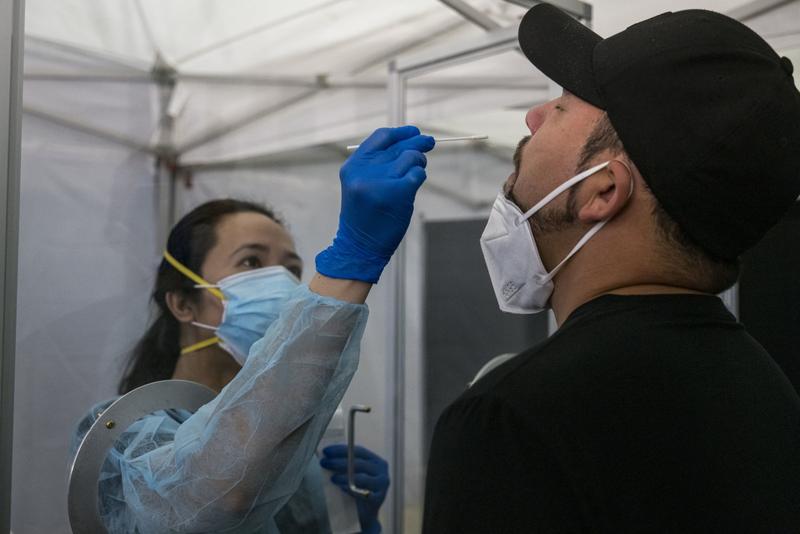 A medical worker wearing personal protective equipment (PPE) administers a rapid COVID-19 test to a traveler at San Francisco International Airport (SFO) in San Francisco, California, US on Oct 15, 2020. (PHOTO / BLOOMBERG)
A medical worker wearing personal protective equipment (PPE) administers a rapid COVID-19 test to a traveler at San Francisco International Airport (SFO) in San Francisco, California, US on Oct 15, 2020. (PHOTO / BLOOMBERG)
The International Air Transport Association is working to set up a testing system that will replace compulsory quarantine to help revive the airline industry that’s been decimated by the coronavirus outbreak.
IATA, which represents about 290 airlines globally, is working with the International Civil Aviation Organization and the World Health Organization to put in place scalable, affordable and fast testing systems, said Conrad Clifford, IATA’s regional vice president for Asia Pacific.
IATA, which represents about 290 airlines globally, is working with the International Civil Aviation Organization and the World Health Organization to put in place scalable, affordable and fast testing systems, said Conrad Clifford, IATA’s regional vice president for Asia Pacific
ALSO READ: Millions fly with China’s airlines as pandemic drags on others
“We need testing because we need to get rid of quarantines,” Clifford said in an interview on Bloomberg Television Monday. “What we’ve seen so far is if there’s a 14-day quarantine, it’s the same as closing your borders.”
Clifford said IATA would “prefer to see some testing before departure and ideally, if we can find countries with similar levels of COVID risk, much like Singapore and Hong Kong, then that takes away the need for further testing.”
Singapore and Hong Kong agreed last week to open their borders to one another for the first time in almost seven months, exempting people in both cities from compulsory quarantine to help reinstate links between Asia’s two premier financial hubs. Details on the arrangement, which is expected to start within weeks, haven’t yet been publicly laid out.
Tests should ideally cost less than US$10, Clifford said.
The risk of passengers getting infected is “very low” as airlines are carrying out deeper sanitizing of planes, and cut back on in-flight catering and magazines, Clifford said. Based on about 44 potential cases of infection on board recorded this year, the chances of passengers getting the virus is about one in 27 million, he said.
ALSO READ: Qantas 'full-day' flight to nowhere takes off to battle slump
The chance of being infected on board is lower than that of being struck by a lightning, Clifford said. “There have been a lot measures airlines have taken to absolutely drive that chance down to as close to zero as we can get it. So it’s a very safe environment indeed.”
While IATA forecast in June that airlines will lose a combined $84 billion this year because of the virus, that number is set to be larger because the market hasn’t opened as the industry had hoped, Clifford said. The group has said that it expects travel demand won’t recover to the pre-COVID levels until 2024.
Cargo has been “a little bit of a silver lining” for the industry -- partly fueled by online purchasing -- and that is set to continue for the coming years, Clifford said. Airfreight is expected to account for about 26 percent of carriers’ revenue this year, compared with 12 percent in 2019, he said.
Cargo rates jumped after thousands of passenger planes, which carry more than half of airfreight, were grounded due to the travel restrictions. That prompted airlines to convert passenger planes to haul goods.
READ MORE: Airlines plead for mandatory virus tests to prop up demand


